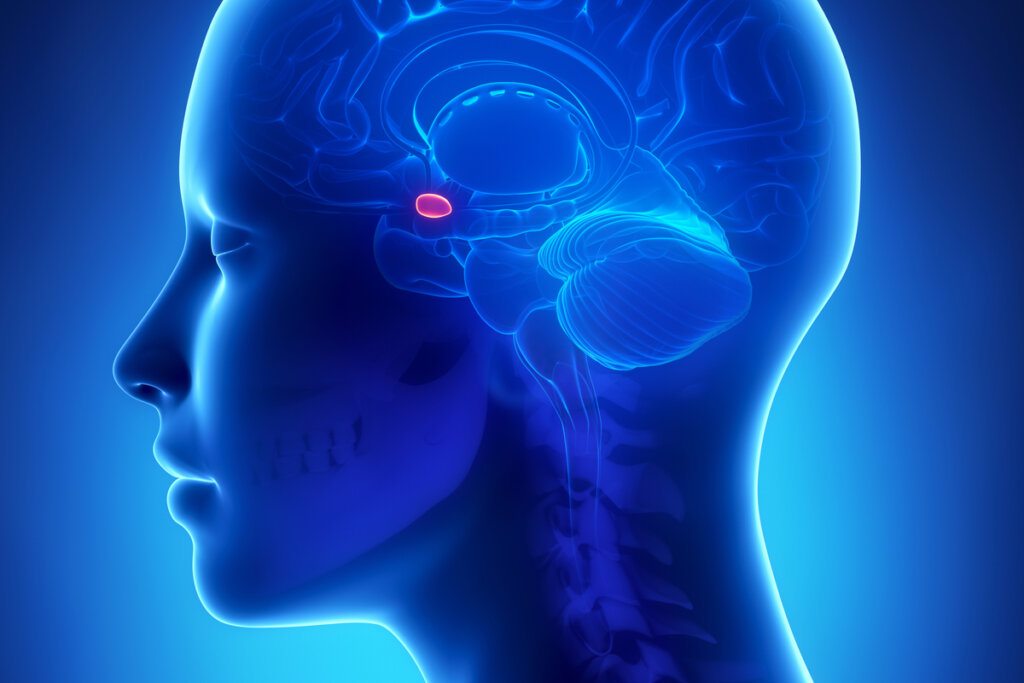One Lie Leads to Another, Research Confirms


Written and verified by the psychologist María Vélez
Popular wisdom has been telling us for decades that one lie leads to another. It’s the snowball effect. When a person lies, they’re almost inevitably drawn to continue lying to make their story more credible.
These common yet valuable ideas are based on observations that we make of our environment and that we pass on to each other. However, in addition, they’re a source of inspiration for experts in the field of human psychology. In this article, we’re going to talk about the knowledge that science has given us about lying and how it can become an endless cycle.
Lying is a skill
Whether we like it or not, lying and cheating are part of our nature. As a matter of fact, other animals, such as chimpanzees, pufferfish, and even some plants, are capable of manipulating what others perceive to make them believe something they want them to believe. In fact, living beings have had to develop this ability to survive.
In our case, we know that lying is an ability that evolves throughout a person’s development, in much the same way as walking or language. It’s claimed that 30-50 percent of children between two to three years old try to lie to their parents, but these lies are extremely difficult to believe. For example, they might report that they saw a neighbor lift their car up with their little finger.
Around the age of four, thanks to the development of the theory of mind, 80 percent of infants are capable of lying (and do so regularly), knowing that other people may have their own thoughts and that they don’t necessarily have to match their own. However, on many occasions, these lies actually confuse fantasy with reality.
Between the ages of five and ten, with the beginning of the development of certain brain regions and executive functions, children begin to understand what lying means and its implications. Therefore, they’re better able to inhibit the impulse to lie and tend to tell the truth. Finally, by the age of eleven, children know how to distinguish between truths and lies.

Why do we lie?
As we mentioned earlier, lying has a biological component that helps us ‘survive’ in a social context. In other words, it allows us to protect ourselves from certain threats or to obtain a benefit. For example, for fear of disappointment, to avoid a reprimand, to get out of the way, or to feel integrated.
For this reason, a lie is, especially for children, an opportunity to learn how to predict the behavior, attitudes, limits, and beliefs of others. Therefore, lying also has an element of learning.
When a person lies, there’s an increase in the activity of the frontal and temporal cortex and in the limbic system, more specifically, in the amygdala. This increase provides a great brain stimulus. It promotes neural connections which means it makes the associations between memories and ideas occur more easily and quickly every time it happens.
Therefore, the more you lie, the easier it becomes.
One lie leads to another: the study
Today, we can confidently state that one lie leads to another, thanks to a group of researchers from University College, London (UK). They studied what happened in the brains of the people who successively cheated.
To do this, they recruited 80 volunteers to undertake behavioral economics tasks while their brain function was observed using functional magnetic resonance imaging.
The task was to calculate the number of coins in a jar. Once calculated, they had to send the result electronically to their experimental partner. If the result was close to the actual amount, both would have benefits. If the difference was large, it would benefit the volunteer, but not their peer.
The results of the study showed that, when they saw that lying was in their best interest, the participants began to gradually exaggerate their calculations, repeatedly. In other words, one lie led to another for their own benefit.
At the brain level, the researchers found a normal reaction in the amygdala, which was strongly activated after lying the first few times. However, throughout the task, and as the magnitude and frequency of the lies increased, the activation of this emotional region became less intense.

What does this mean?
The experts interpreted these findings as the exhibition of desensitization to lying. More intense activation in the amygdala revealed the negative feelings that lying causes us. In fact, previous research had concluded that the amygdala is the structure in charge of limiting the extent to which we’re prepared to lie. It’s as if it were our inner Jiminy Cricket.
On the other hand, the fact that activation decreased throughout the task indicates that, as a person lies, their guilt, remorse, or shame decreases. Consequently, every time we lie, we become less sensitive to the negative emotions associated with this process. Therefore, it’s more likely that we’ll do it again.
Once again, science has helped us to better understand human behavior, as well as supporting valuable popular wisdom. So, from now on, before lying, ask yourself if it’s worth it and if it’s the path you want to follow. After all, perhaps that little white lie could unleash a string of deceit that you’ll be unable to escape from.
Popular wisdom has been telling us for decades that one lie leads to another. It’s the snowball effect. When a person lies, they’re almost inevitably drawn to continue lying to make their story more credible.
These common yet valuable ideas are based on observations that we make of our environment and that we pass on to each other. However, in addition, they’re a source of inspiration for experts in the field of human psychology. In this article, we’re going to talk about the knowledge that science has given us about lying and how it can become an endless cycle.
Lying is a skill
Whether we like it or not, lying and cheating are part of our nature. As a matter of fact, other animals, such as chimpanzees, pufferfish, and even some plants, are capable of manipulating what others perceive to make them believe something they want them to believe. In fact, living beings have had to develop this ability to survive.
In our case, we know that lying is an ability that evolves throughout a person’s development, in much the same way as walking or language. It’s claimed that 30-50 percent of children between two to three years old try to lie to their parents, but these lies are extremely difficult to believe. For example, they might report that they saw a neighbor lift their car up with their little finger.
Around the age of four, thanks to the development of the theory of mind, 80 percent of infants are capable of lying (and do so regularly), knowing that other people may have their own thoughts and that they don’t necessarily have to match their own. However, on many occasions, these lies actually confuse fantasy with reality.
Between the ages of five and ten, with the beginning of the development of certain brain regions and executive functions, children begin to understand what lying means and its implications. Therefore, they’re better able to inhibit the impulse to lie and tend to tell the truth. Finally, by the age of eleven, children know how to distinguish between truths and lies.

Why do we lie?
As we mentioned earlier, lying has a biological component that helps us ‘survive’ in a social context. In other words, it allows us to protect ourselves from certain threats or to obtain a benefit. For example, for fear of disappointment, to avoid a reprimand, to get out of the way, or to feel integrated.
For this reason, a lie is, especially for children, an opportunity to learn how to predict the behavior, attitudes, limits, and beliefs of others. Therefore, lying also has an element of learning.
When a person lies, there’s an increase in the activity of the frontal and temporal cortex and in the limbic system, more specifically, in the amygdala. This increase provides a great brain stimulus. It promotes neural connections which means it makes the associations between memories and ideas occur more easily and quickly every time it happens.
Therefore, the more you lie, the easier it becomes.
One lie leads to another: the study
Today, we can confidently state that one lie leads to another, thanks to a group of researchers from University College, London (UK). They studied what happened in the brains of the people who successively cheated.
To do this, they recruited 80 volunteers to undertake behavioral economics tasks while their brain function was observed using functional magnetic resonance imaging.
The task was to calculate the number of coins in a jar. Once calculated, they had to send the result electronically to their experimental partner. If the result was close to the actual amount, both would have benefits. If the difference was large, it would benefit the volunteer, but not their peer.
The results of the study showed that, when they saw that lying was in their best interest, the participants began to gradually exaggerate their calculations, repeatedly. In other words, one lie led to another for their own benefit.
At the brain level, the researchers found a normal reaction in the amygdala, which was strongly activated after lying the first few times. However, throughout the task, and as the magnitude and frequency of the lies increased, the activation of this emotional region became less intense.

What does this mean?
The experts interpreted these findings as the exhibition of desensitization to lying. More intense activation in the amygdala revealed the negative feelings that lying causes us. In fact, previous research had concluded that the amygdala is the structure in charge of limiting the extent to which we’re prepared to lie. It’s as if it were our inner Jiminy Cricket.
On the other hand, the fact that activation decreased throughout the task indicates that, as a person lies, their guilt, remorse, or shame decreases. Consequently, every time we lie, we become less sensitive to the negative emotions associated with this process. Therefore, it’s more likely that we’ll do it again.
Once again, science has helped us to better understand human behavior, as well as supporting valuable popular wisdom. So, from now on, before lying, ask yourself if it’s worth it and if it’s the path you want to follow. After all, perhaps that little white lie could unleash a string of deceit that you’ll be unable to escape from.
All cited sources were thoroughly reviewed by our team to ensure their quality, reliability, currency, and validity. The bibliography of this article was considered reliable and of academic or scientific accuracy.
- Garrett, N., Lazzaro, S.C., Ariely, D., & Sharot, T. (2016). The brain adapts to dishonesty. Nature Neuroscience, 19(12), 1727-1732. https://doi.org/10.1038/nn.4426
- Shenhav, A., & Greene, J. D. (2014). Integrative moral judgment: dissociating the roles of the amygdala and ventromedial prefrontal cortex. The Journal of neuroscience: the official journal of the Society for Neuroscience, 34(13), 4741–4749. https://doi.org/10.1523/JNEUROSCI.3390-13.2014
This text is provided for informational purposes only and does not replace consultation with a professional. If in doubt, consult your specialist.







